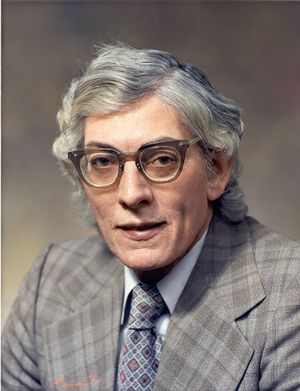William McMurray: Difference between revisions
No edit summary |
|||
| Line 3: | Line 3: | ||
[[Image:1830 - William McMurray.jpg|thumb|right]] | [[Image:1830 - William McMurray.jpg|thumb|right]] | ||
William McMurray was born on 15 August | William McMurray was born in Los Angeles, California, on 15 August 1926. He grew up in England and earned his B.S. degree in Electrical Engineering from Battersea Polytechnic in London in 1950. He earned an M.S. in Electrical Engineering from Union College in Schenectady, New York, in 1956. Mr. McMurray spent the lion’s share of his career with the [[General Electric (GE)|General Electric Company]], where he worked in its research laboratories in Schenectady from 1953 until 1988. There he pioneered in the development of solid-state electric power control and conversion circuits, including the well-known McMurray Commutation Circuit as well as rectifiers, inverters, and dc converters using thyristors and transistors. He also worked in the areas of advanced power systems, motor drives, and computer simulation of converter circuits. | ||
Over his lifetime he | Over his lifetime he was awarded at least 23 U.S. patents, authored one book, ''The Theory and Design of Cyclo-converters'' (1972), and co-authored another, ''Principles of Inverter Circuits'' (1964). In 1978 McMurray was awarded the [[IEEE William E. Newell Power Electronics Award|William E. Newell award of the Power Electronics Specialists]] conference for outstanding achievement in power electronics. He became an IEEE Fellow in 1980 and a Life Fellow in 1994. He received the IEEE Newell Award (1978), the [[IEEE Lamme Medal]] (1984), and the IEEE Millennium Medal (2000) for his contributions to research in solid-state power circuits. Befitting his dual citizenship, McMurray was also an associate member of the Institution of Electrical Engineers (now IET) and a professional engineer in New York state. | ||
William McMurray died in 2006. | Outside of work, McMurray hiked and canoed in the Adirondack Mountains of New York and followed developments in Egyptology. William McMurray died in 2006. | ||
== Further Reading == | == Further Reading == | ||
Revision as of 19:00, 12 September 2014
Biography
William McMurray was born in Los Angeles, California, on 15 August 1926. He grew up in England and earned his B.S. degree in Electrical Engineering from Battersea Polytechnic in London in 1950. He earned an M.S. in Electrical Engineering from Union College in Schenectady, New York, in 1956. Mr. McMurray spent the lion’s share of his career with the General Electric Company, where he worked in its research laboratories in Schenectady from 1953 until 1988. There he pioneered in the development of solid-state electric power control and conversion circuits, including the well-known McMurray Commutation Circuit as well as rectifiers, inverters, and dc converters using thyristors and transistors. He also worked in the areas of advanced power systems, motor drives, and computer simulation of converter circuits.
Over his lifetime he was awarded at least 23 U.S. patents, authored one book, The Theory and Design of Cyclo-converters (1972), and co-authored another, Principles of Inverter Circuits (1964). In 1978 McMurray was awarded the William E. Newell award of the Power Electronics Specialists conference for outstanding achievement in power electronics. He became an IEEE Fellow in 1980 and a Life Fellow in 1994. He received the IEEE Newell Award (1978), the IEEE Lamme Medal (1984), and the IEEE Millennium Medal (2000) for his contributions to research in solid-state power circuits. Befitting his dual citizenship, McMurray was also an associate member of the Institution of Electrical Engineers (now IET) and a professional engineer in New York state.
Outside of work, McMurray hiked and canoed in the Adirondack Mountains of New York and followed developments in Egyptology. William McMurray died in 2006.
